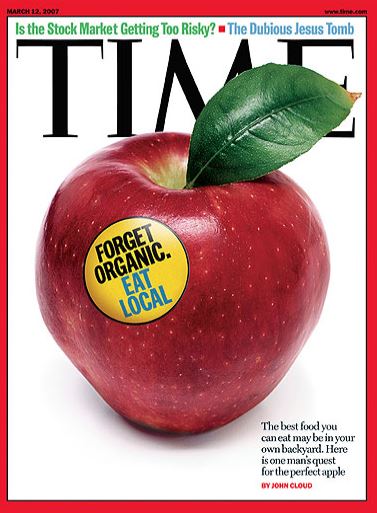The latest edition of the Purdue Agricultural Economics Report has 12 articles that provide outlook on the forthcoming year. The effort was led by Chris Hurt, who provides outlook on the overall agricultural economy in addition to specific pieces on hog, corn, and soybean outlooks. Larry DeBoer provides an overall macro-economy outlook, Russell Hillberry focuses on trade, Roman Keeney provides some perspective on the next Farm Bill, Jim Mintert provides a beef cattle outlook, and Nicole Widmar and Courtney Bir look at dairy and butter trends. The report is rounded out with pieces by Micheal Langemeier and Craig Dobbins on the future of crop costs and returns, rental rates, and land values.
I chipped in with a short piece on food prices. Here is what I had to say (including an extra bonus graph that didn't make the final report).
Last year, 2016, proved to be a record setter, at least in recent history, for food price changes. For the first time in at least three decades, the annual consumer price index for food at home fell. Driven in part by the fall in agricultural commodity prices, prices for food at home fell 1.3% from 2015 to 2016. While prices for food eaten away from home increased 2.6% from 2015 to 2016, this change remained below the twenty-year historical average increase of 2.7%.
Where are retail food prices heading in 2017 and beyond? The fall in prices from food at home appears to have abated. Through the first ten months of 2017, prices for food at home increased every month save one (June), but the increases were quite modest – averaging a tenth of a percentage increase each month. Increases in prices of food away from home through the first ten months of 2017 are similar to that observed during the same time in 2016. The USDA Economic Research Service forecast overall food price inflation of 1% to 2% in 2017 and 1.5% to 2.5% in 2018, with most of the increases coming from changes in prices of food away from home.
The figure below shows the year-over-year monthly changes (for example, the percent change from September 2016 to September 2017) in prices of several food and non-food items. The year-over-year change in the price of food away from home has hovered around 2.5% for the past four years. By contrast, the year-over-year changes in prices of food at home were largely negative in 2016, but have subsequently trended positive. Similar, though more dramatic, patterns are observable for prices of meat and for fruits and vegetables. Despite the recent increases in prices of food at home, meat, and fruits and vegetables, the increases remain quite modest. In-fact, the year-over-year increases for each of these food items remain below the increases in prices of non-food items, which have averaged about 2% since mid-2016. It is important to make comparisons to changes of non-food prices because it is the relative changes that drive consumer purchase behavior. If the price of non-food items increases at the same rate as food items, one wouldn’t expect much change in consumers’ food purchases.
It is useful to place these recent changes into a broader historical perspective, as in the following figure, which shows the percentage price changes relative to January 2007. Over this more than decade-long stretch, the price of food away from home increased at a steady pace to a point to where prices are now 33% higher than a decade ago. From 2007 through 2014, the increase in prices of food at home largely tracked that of prices away from home, but in more recent years, the two price series have diverged, and now food away from home is only about 22% higher than was the case in January 2007. While low commodity prices have helped push down food price inflation at home, the same phenomenon hasn’t held true for food away from home, perhaps due to the greater contribution of non-commodity inputs, such as labor and real estate, that factor into prices of food away from home.
These trends suggest that, to the extent commodity prices remain low, we can expect small increases in prices of food at home in the future, but prices of food away from home may nonetheless continue increasing at historical rates.



